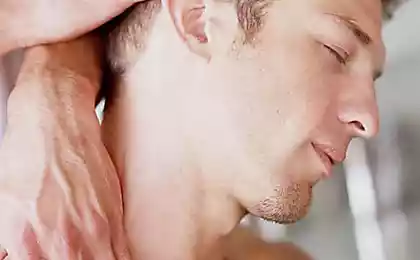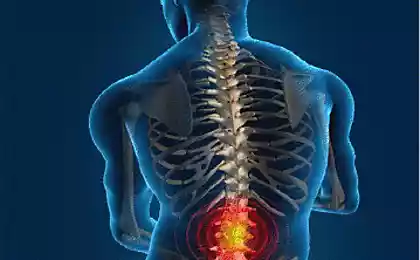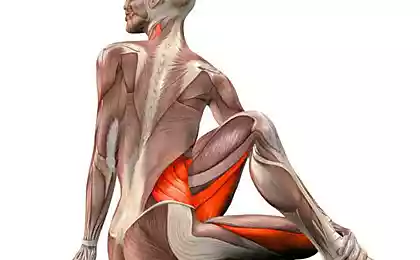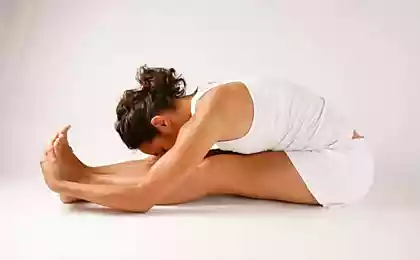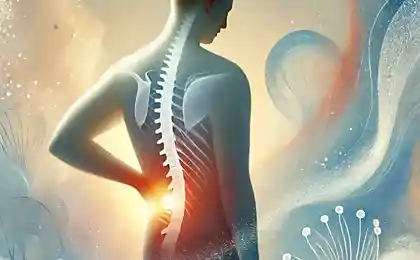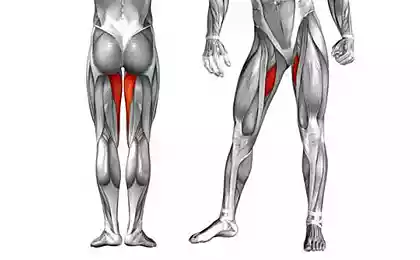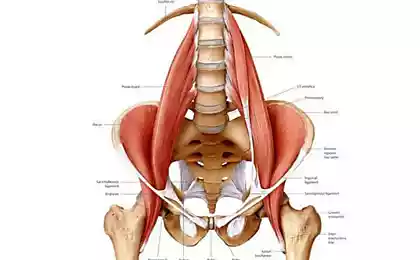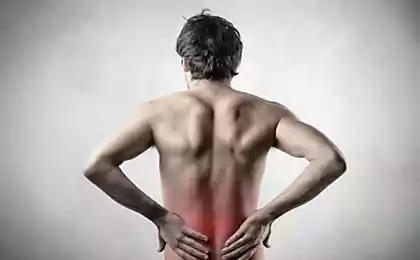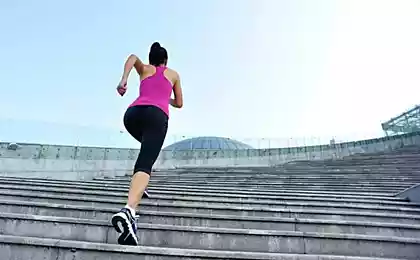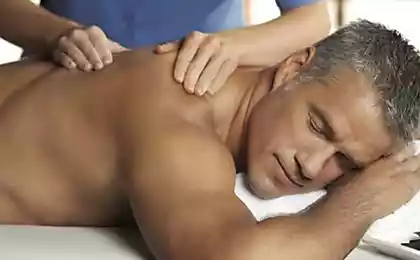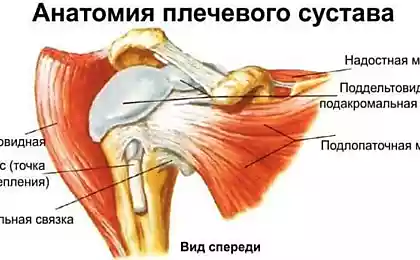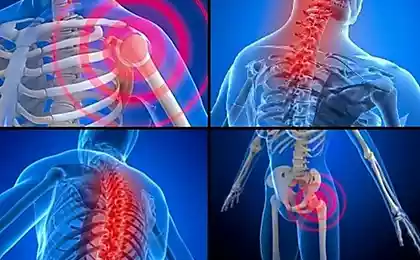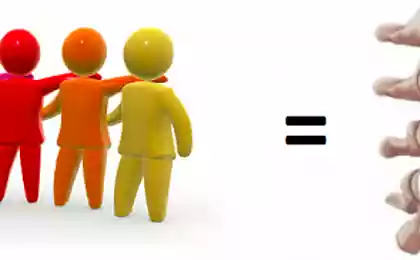441
Lumbago or frozen back: stretching exercises of the muscles
How much suffering causes us pain in the back and lower back, constantly reminding of itself during the movements! Sometimes they do not subside even at night. Pain disrupt sleep, make us unemployable. One possible explanation for this is a painful spasm of paravertebral muscles.
For their defeat characterdevelopment tension in the back and loins, a sense of aching, heaviness, deep, pressing pain in the spine. The pain intensified when bending forward, to the side, the torso twists, for example when climbing stairs, getting up from a chair.
In some cases they can be so strong that are similar to backache. Sometimes they can give the sacrum, coccyx, buttock, and even thigh, mimicking radicular syndrome with a herniated disc. In such cases, a thorough medical examination using computer tomography allows to exclude this pathology.
Forty three million two hundred seventeen thousand seven hundred seventy three
In addition, the absence of other evidence of the defeat of the spine, impaired reflexes and sensitivity, the presence of atrophy, weakness of muscles, etc., as well as a long unsuccessful treatment say in favor of the destruction of paravertebral muscles. Usually these pains are located near the spine and pressing on different areas parts of the muscles are enhanced.
The main function of the paravertebral muscles during bilateral contraction to straighten the spine, with a unilateral reduction — bend and tilt the torso in the direction opposite to reduction.
Causes spasm:
It is easiest to palpate the affected muscle, lying on the healthy side. Palpation is done by the fingertips. In some cases, if the muscle lies deep, when pressed, have to make great efforts.
Normally, when the correct determination of the place of the spasm with pressure occurs the same pain you experience when moving. As a rule, the location of the maximum of pain corresponds to the portion of maximum spasm.
Very often when you lose muscle painful seal can appear in several areas, that is why palpation can be detected by three or more tender points.
Stretching:
Since not all paravertebral muscles equally well extend in one position due to different attachment points, use multiple options stretching.
Position No. 1 (Fig. 1A) Lying on your side with bent knees and hip joints with legs, hold your knees with your hands. Stretching is achieved by approximation of knees to the chest, and the head to the stomach.
Position No. 2 (Fig. 1B) Lying on your side, bend your torso forward. Legs should be bent in the hip joints and straight in knees, hands folded on his head. Stretching is achieved by tilting the head to the stomach.
Regulation No. 3 (Fig. 1B) Lying on the healthy side, the upper hand retract, lower arm lay under his head. The lower leg should be straightened, and the upper one bent at the knee and hip joints. Then, turning on his back, at the same time lower down the leg knee on top of it. The torso can be slightly bent.
Three million one hundred twenty six thousand four hundred sixty five
Prevention:
P. S. And remember, just changing your mind — together we change the world! ©
Source: vk.com/wall-23903469?w=wall-23903469_12106%2Fall
For their defeat characterdevelopment tension in the back and loins, a sense of aching, heaviness, deep, pressing pain in the spine. The pain intensified when bending forward, to the side, the torso twists, for example when climbing stairs, getting up from a chair.
In some cases they can be so strong that are similar to backache. Sometimes they can give the sacrum, coccyx, buttock, and even thigh, mimicking radicular syndrome with a herniated disc. In such cases, a thorough medical examination using computer tomography allows to exclude this pathology.
Forty three million two hundred seventeen thousand seven hundred seventy three
In addition, the absence of other evidence of the defeat of the spine, impaired reflexes and sensitivity, the presence of atrophy, weakness of muscles, etc., as well as a long unsuccessful treatment say in favor of the destruction of paravertebral muscles. Usually these pains are located near the spine and pressing on different areas parts of the muscles are enhanced.
The main function of the paravertebral muscles during bilateral contraction to straighten the spine, with a unilateral reduction — bend and tilt the torso in the direction opposite to reduction.
Causes spasm:
- vertebral osteochondrosis;
- hyperextension of the muscles that occurs when quickly turning and tilting the body forward, for example with a sharp rise of the fallen on the floor things;
- strong contraction of the muscles when lifting or holding heavy objects;
- a quick twist of the torso that occurs when wrapping on a shout or sudden noise, and a sharp turn of the torso when shooting during a fight and punches in the Boxing, etc.;
- long, immobile sitting, especially in uncomfortable position;
- rapid awkward movement of the body, including bending and twisting that occurs when you try to catch the ball or during braking of the bus, etc.;
- works associated with a long torso or repeated lifting, for example weeding the garden, hand washing, washing floors, etc.;
- hypothermia and drafts.
It is easiest to palpate the affected muscle, lying on the healthy side. Palpation is done by the fingertips. In some cases, if the muscle lies deep, when pressed, have to make great efforts.
Normally, when the correct determination of the place of the spasm with pressure occurs the same pain you experience when moving. As a rule, the location of the maximum of pain corresponds to the portion of maximum spasm.
Very often when you lose muscle painful seal can appear in several areas, that is why palpation can be detected by three or more tender points.
Stretching:
Since not all paravertebral muscles equally well extend in one position due to different attachment points, use multiple options stretching.
Position No. 1 (Fig. 1A) Lying on your side with bent knees and hip joints with legs, hold your knees with your hands. Stretching is achieved by approximation of knees to the chest, and the head to the stomach.
Position No. 2 (Fig. 1B) Lying on your side, bend your torso forward. Legs should be bent in the hip joints and straight in knees, hands folded on his head. Stretching is achieved by tilting the head to the stomach.
Regulation No. 3 (Fig. 1B) Lying on the healthy side, the upper hand retract, lower arm lay under his head. The lower leg should be straightened, and the upper one bent at the knee and hip joints. Then, turning on his back, at the same time lower down the leg knee on top of it. The torso can be slightly bent.
Three million one hundred twenty six thousand four hundred sixty five
Prevention:
- try to carefully warm up before the upcoming sports;
- conduct a timely and comprehensive treatment of degenerative disc disease;
- osteohondroznye follow the rules of safety when lifting and carrying heavy loads;
- avoid works that cause overloading of the muscles;
- try to alleviate the conditions associated with the operation of the paravertebral muscles;
- use stretching of the muscles. published
P. S. And remember, just changing your mind — together we change the world! ©
Source: vk.com/wall-23903469?w=wall-23903469_12106%2Fall
